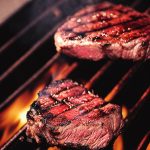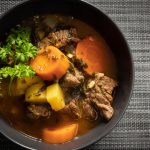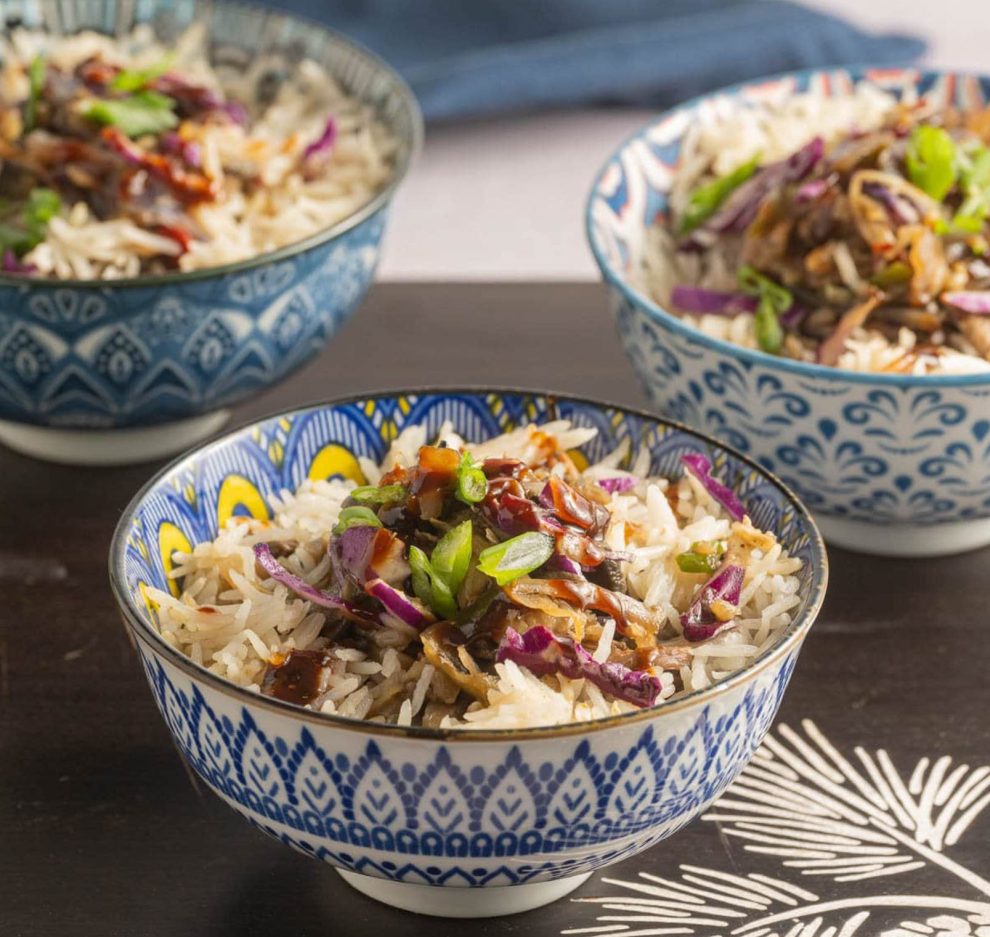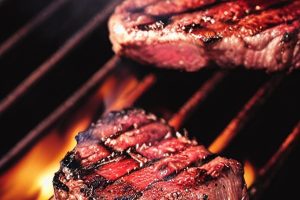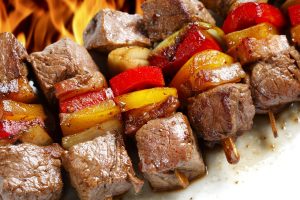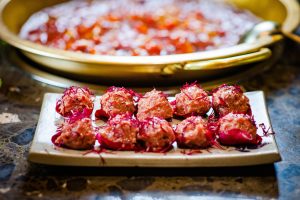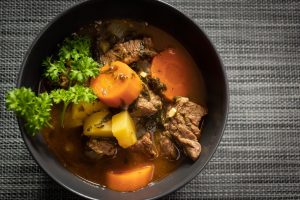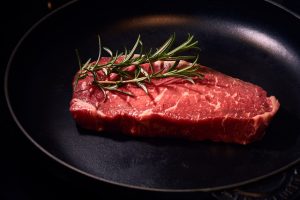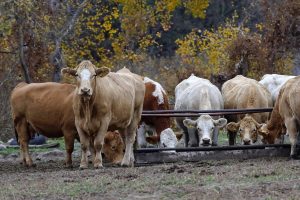Unraveling the Mystery: Tracing the Origins of Moo Shu Beef
Moo Shu Beef is a popular Chinese dish that has gained worldwide recognition for its unique flavors and textures. However, the origins of this delectable dish remain shrouded in mystery. In this article, we will delve into the history of Moo Shu Beef and attempt to trace its roots.
The exact origins of Moo Shu Beef are difficult to pinpoint, as Chinese cuisine has a rich and complex history with countless regional variations. However, the dish is believed to have originated in Northern China, specifically in the Shandong province. This region is known for its diverse culinary traditions and is considered the birthplace of many famous Chinese dishes.
Moo Shu Beef is characterized by its tender slices of beef, stir-fried with a variety of vegetables such as cabbage, mushrooms, and bamboo shoots. The dish is typically seasoned with soy sauce, hoisin sauce, and other traditional Chinese spices. It is then wrapped in a thin pancake or tortilla-like wrapper, creating a delightful combination of flavors and textures.
One theory suggests that Moo Shu Beef was originally created as a way to utilize leftover ingredients. In traditional Chinese households, it was common to repurpose leftover meats and vegetables into new dishes. Moo Shu Beef may have been born out of this practice, as it allows for the creative use of various ingredients.
Another theory suggests that Moo Shu Beef was influenced by the Mongolian cuisine, which had a significant impact on Northern Chinese cooking. The Mongolian people were known for their nomadic lifestyle and hearty meat-based dishes. It is possible that the combination of beef and vegetables in Moo Shu Beef was inspired by Mongolian culinary traditions.
Regardless of its exact origins, Moo Shu Beef gained popularity in the United States during the mid-20th century. Chinese immigrants brought their culinary traditions with them to America, and Moo Shu Beef quickly became a favorite among Chinese-American communities. Today, it is a staple on many Chinese restaurant menus and is enjoyed by people of various cultural backgrounds.
In conclusion, the origins of Moo Shu Beef may be elusive, but its flavors and textures continue to captivate the taste buds of food enthusiasts worldwide. Whether it was born out of resourcefulness or influenced by Mongolian cuisine, this delicious dish remains a beloved part of Chinese culinary heritage. So, the next time you savor the flavors of Moo Shu Beef, take a moment to appreciate the mystery that surrounds its origins.
From Ancient China to Your Plate: The Fascinating History of Moo Shu Beef
Moo Shu Beef, a popular dish found in many Chinese restaurants today, has a rich and fascinating history that stretches back centuries to ancient China. This dish, characterized by tender strips of beef stir-fried with vegetables and wrapped in paper-thin pancakes, has evolved over time, incorporating various culinary influences and techniques.
The origins of Moo Shu Beef can be traced back to the northern region of China, particularly the Shandong province. This area, known for its diverse agricultural resources, provided the necessary ingredients for the creation of this delicious dish. Traditionally, Moo Shu Beef was made using thinly sliced beef, typically from the tenderloin or flank, which was marinated in a mixture of soy sauce, rice wine, and various spices. This marinated beef was then stir-fried together with a colorful array of vegetables such as cabbage, mushrooms, and scallions.
The name “Moo Shu” itself has an interesting backstory. The term “Moo Shu” is derived from the Mandarin word “mù xū,” which translates to “wood shavings.” This name refers to the thin, delicate pancakes that are an integral part of the dish. These pancakes are made by mixing flour, water, and sometimes eggs, and then rolling out the dough into thin circles. The circles are then cooked on a hot griddle until they become soft and pliable, ready to be filled with the flavorful beef and vegetable mixture.
Throughout history, Moo Shu Beef has undergone several transformations, influenced by the cultural exchange and migration of people within China. During the Tang Dynasty (618-907 AD), when the Silk Road flourished, new spices and ingredients were introduced to Chinese cuisine. This led to the incorporation of exotic spices such as ginger, garlic, and Szechuan peppercorns into the dish, giving it a more complex and flavorful profile.
In the 13th century, the Mongol Empire, led by Genghis Khan, conquered China and brought with them their own culinary traditions. This Mongolian influence can be seen in the use of stir-frying, a cooking technique that quickly sears the ingredients over high heat, resulting in a vibrant and crisp texture. The Mongolians also introduced the use of hoisin sauce, a sweet and savory condiment made from fermented soybeans, vinegar, and spices, which further enhanced the taste of the dish.
Over time, Moo Shu Beef gained popularity outside of China, particularly in Western countries. Chinese immigrants who settled in the United States during the 19th century brought with them their culinary heritage, including this beloved dish. It was in America that Moo Shu Beef underwent yet another transformation to suit local tastes. The addition of ingredients like carrots, bean sprouts, and even scrambled eggs became common in Americanized versions of this dish.
Today, Moo Shu Beef continues to be a beloved staple in Chinese cuisine, both in its traditional form and its various adaptations. Its fascinating history, rooted in ancient China and influenced by cultural exchanges, showcases the dynamic nature of culinary traditions. So the next time you savor a plate of Moo Shu Beef, take a moment to appreciate the centuries-old journey that has brought this delicious dish from ancient China to your plate.
Exploring the Cultural Significance of Moo Shu Beef: A Culinary Adventure
Moo Shu Beef is a traditional Chinese dish that has gained popularity worldwide. Its cultural significance lies not only in its delicious taste but also in its rich history and symbolism. This culinary adventure takes us on a journey to explore the cultural significance of Moo Shu Beef, uncovering its origins, ingredients, and preparation methods.
Originating from northern China, Moo Shu Beef has a long history that dates back to the Han Dynasty (206 BC – 220 AD). It was initially prepared as a dish for the imperial court and was later introduced to the general public. The name “Moo Shu” translates to “wood shavings,” which refers to the thin strips of beef used in the dish. This name reflects the tradition of slicing beef into thin pieces to maximize tenderness and flavor.
The dish’s cultural significance stems from its connection to Chinese New Year celebrations. In Chinese culture, food plays a vital role in festivals and is believed to bring good luck and prosperity. Moo Shu Beef is often served during Chinese New Year banquets as a symbol of wealth and abundance. Its ingredients, such as beef, mushrooms, and bamboo shoots, represent prosperity and fertility.
The preparation of Moo Shu Beef requires meticulous attention to detail. The beef is marinated in a combination of soy sauce, rice wine, and various spices to enhance its flavor. It is then stir-fried with a medley of vegetables, including cabbage, carrots, and bean sprouts. The dish is traditionally served with thin pancakes made from flour, which act as a wrapper for the beef and vegetable mixture. The pancakes are carefully rolled around the filling and enjoyed as a handheld delicacy.
The cultural significance of Moo Shu Beef extends beyond its taste and presentation. It reflects the traditional Chinese values of harmony and balance in its combination of flavors and textures. The dish offers a perfect balance of savory and sweet, crisp and tender, creating a harmonious culinary experience.
In addition to its cultural symbolism, Moo Shu Beef also showcases the diversity and adaptability of Chinese cuisine. As it spread to different regions, variations of the dish emerged, incorporating local ingredients and flavors. For example, in the United States, Moo Shu Beef often includes ingredients like scrambled eggs and hoisin sauce, reflecting the influence of American tastes.
In conclusion, Moo Shu Beef holds immense cultural significance in Chinese cuisine. Its origins, ingredients, and preparation methods all contribute to its symbolic value. This culinary adventure has allowed us to explore the history and cultural meaning behind this beloved dish. Whether enjoyed during Chinese New Year celebrations or as part of a regular meal, Moo Shu Beef offers a taste of tradition and a glimpse into the rich cultural heritage of China.
Ingredients and Techniques: Unlocking the Secrets of Authentic Moo Shu Beef
Moo Shu Beef is a classic Chinese dish that is known for its tender slices of beef, crisp vegetables, and flavorful sauce. To truly unlock the secrets of authentic Moo Shu Beef, it is important to understand the key ingredients and techniques that make this dish so special. In this informative guide, we will explore the essential components and methods for preparing this beloved Chinese dish.
Ingredients:
- Beef: The star of the dish, the beef should be tender and thinly sliced. Traditional cuts include flank steak or sirloin, but you can also use other lean cuts of beef. It is important to marinate the beef for at least 30 minutes to enhance its flavor and tenderness.
- Vegetables: Moo Shu Beef typically includes cabbage, carrots, mushrooms, and bamboo shoots. These vegetables add crunch, texture, and a hint of sweetness to the dish. It is recommended to julienne the vegetables into thin strips for even cooking.
- Eggs: Eggs are an essential ingredient that adds richness and texture to the dish. They are typically scrambled separately and then mixed with the other ingredients.
- Hoisin Sauce: This thick and savory sauce is the signature flavor of Moo Shu Beef. It is made from soybeans, garlic, chili peppers, and various spices. Hoisin sauce adds a depth of flavor and a hint of sweetness to the dish.
- Soy Sauce: A staple in Chinese cuisine, soy sauce adds a salty and savory element to the dish. It is used to season the beef and vegetables during the stir-frying process.
Techniques:
- Marinating the Beef: To ensure the beef is tender and flavorful, it is crucial to marinate it before cooking. A simple marinade can be made using soy sauce, rice wine, cornstarch, and a touch of sugar. Allow the beef to marinate for at least 30 minutes or overnight for best results.
- Stir-Frying: Moo Shu Beef is traditionally cooked using a high heat stir-frying technique. Heat a wok or a large skillet over high heat and add a small amount of oil. Stir-fry the beef until it is browned and cooked to your desired level of doneness. Remove the beef from the pan and set it aside.
- Stir-Frying the Vegetables: In the same pan, add more oil if needed and stir-fry the vegetables until they are tender-crisp. It is important to cook the vegetables quickly to retain their vibrant colors and crisp texture.
- Mixing the Sauce: In a separate bowl, combine the hoisin sauce, soy sauce, and a small amount of sugar. Mix well to ensure the flavors are evenly incorporated.
- Combining the Ingredients: Once the vegetables are cooked, add the scrambled eggs and cooked beef back into the pan. Pour the sauce over the mixture and stir-fry for a few more minutes until everything is well coated and heated through.
- Serving: Moo Shu Beef is traditionally served with Mandarin pancakes or flour tortillas. Spread a thin layer of hoisin sauce on the pancake, spoon the beef and vegetable mixture onto it, and roll it up like a burrito.
By following these key ingredients and techniques, you can unlock the secrets of authentic Moo Shu Beef. The combination of tender beef, crisp vegetables, and flavorful sauce will create a delicious and satisfying Chinese dish that is sure to impress.
From Imperial Banquets to Local Delicacies: The Evolution of Moo Shu Beef Throughout History
Moo Shu Beef, a popular dish in Chinese cuisine, has a rich and fascinating history that spans centuries. From its origins as a delicacy enjoyed by imperial banquets to its transformation into a beloved local dish, the evolution of Moo Shu Beef reflects the changing culinary landscape of China. In this article, we will delve into the historical journey of this dish, providing an informative and formal account of its development.
The story of Moo Shu Beef begins in ancient China, during the Tang Dynasty (618-907 AD). This period marked the height of imperial banquets, where extravagant meals were prepared for the royal court. It is believed that Moo Shu Beef originated as a specialty dish created exclusively for these lavish feasts. The dish was known for its tender strips of beef, stir-fried with an array of vegetables and spices, and served with thin pancakes made from wheat flour.
As time went on, the popularity of Moo Shu Beef spread beyond the imperial court and into the homes of common people. With the rise of the Song Dynasty (960-1279 AD), a shift in Chinese cuisine took place. The emphasis on light and delicate flavors became more prevalent, and dishes like Moo Shu Beef began to incorporate a wider variety of vegetables, such as mushrooms, bamboo shoots, and cabbage. These additions not only enhanced the taste but also added a touch of color to the dish, making it more visually appealing.
During the Ming Dynasty (1368-1644 AD), the culinary scene in China underwent another transformation. The introduction of the wok, a versatile cooking vessel, revolutionized the way dishes like Moo Shu Beef were prepared. The wok allowed for quick and even heat distribution, resulting in more efficient stir-frying techniques. This innovation led to the creation of juicier and more flavorful Moo Shu Beef, as the beef could be cooked at high temperatures while retaining its tenderness.
In the modern era, Moo Shu Beef has become a staple in local Chinese restaurants around the world. It has undergone further adaptations to suit regional tastes and preferences. For example, in Sichuan cuisine, known for its bold and spicy flavors, Moo Shu Beef may be infused with chili peppers or Sichuan peppercorns to add a fiery kick. In contrast, in Cantonese cuisine, which emphasizes freshness and natural flavors, Moo Shu Beef may be prepared with lighter seasonings and a greater emphasis on the quality of the ingredients.
In conclusion, the evolution of Moo Shu Beef reflects the dynamic nature of Chinese cuisine throughout history. From its origins as a dish served exclusively at imperial banquets to its transformation into a beloved local delicacy, this dish has adapted and evolved to suit changing tastes and culinary techniques. Whether enjoyed at a formal banquet or a local restaurant, Moo Shu Beef continues to captivate diners with its rich history and delicious flavors.
